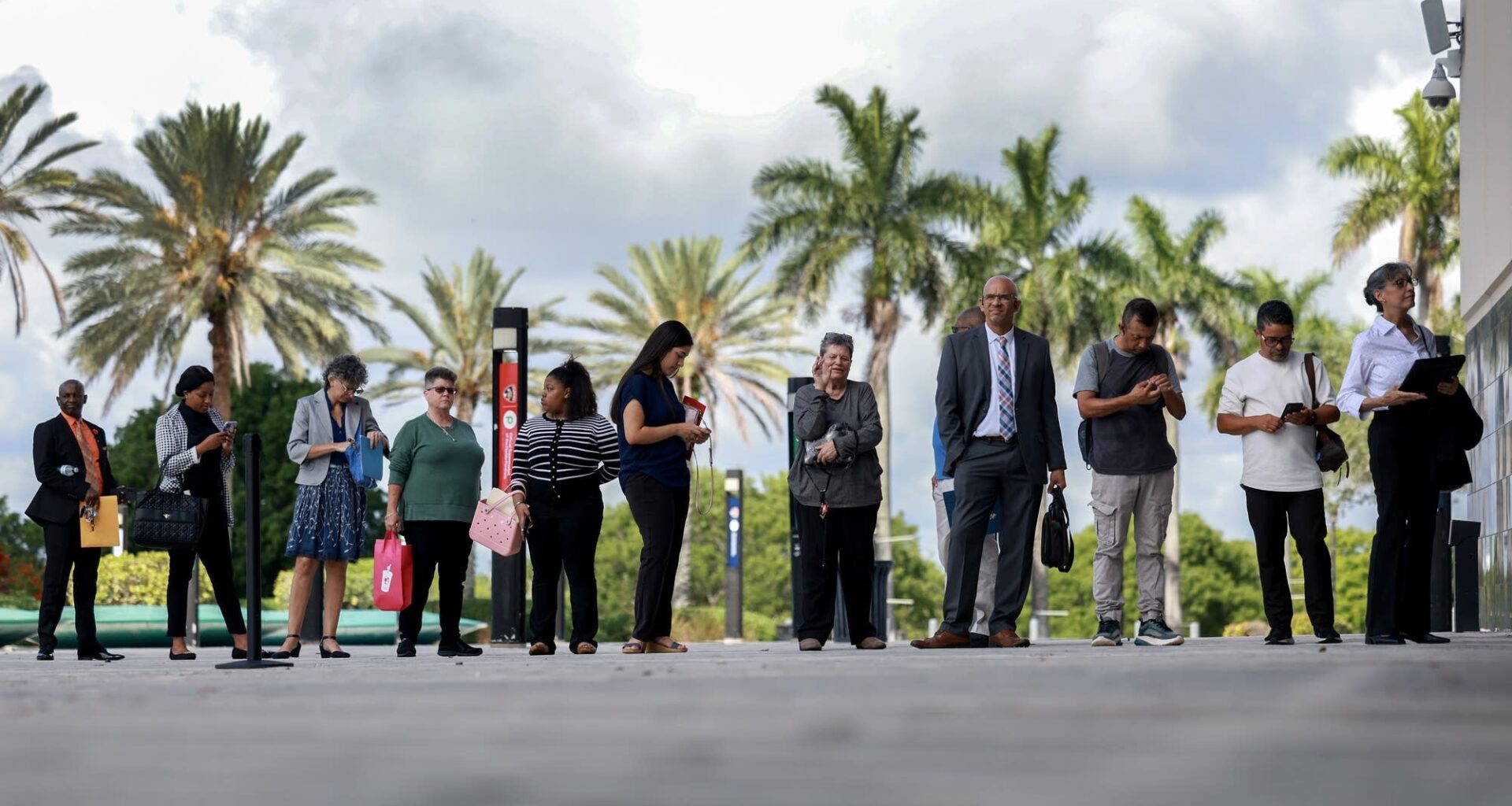While some of the experts who put together the data that helps us understand the health of the U.S. labor market have been “out of the office,” new analysis by the Dallas Federal Reserve can help us understand what to make of the modest payroll gains we’ve been seeing in recent months. It all has to do with what economists call “break-even employment” — a measure that’s drastically shifted.
Break-even employment is sort of a balance between the number of job seekers and the number of jobs available.
“It’s the number of jobs the economy needs to add a month in order to keep the unemployment rate stable,” said Alí Bustamante, an economics professor at the University of New Orleans.
Think of it as kind of the metabolism of the labor force: The number of hungry workers in should match the number of new jobs out there.
Right now, the Dallas Fed estimates that sweet spot is around 30,000. That’s a big drop from previous years.
“Just two years ago, we basically had an economy where we had to add about 250,000 jobs a month to achieve break-even employment,” Bustamante said.
So, what was happening in 2023 that made the break-even point so much higher than it is today?
“The population of the United States was growing very rapidly,” said V. V. Chari, an economics professor at the University of Minnesota.
Specifically, he referred to migration: “A large number of people were crossing the border, and those people came looking for work,” Chari said.
So, lots of new job seekers came in.
“And the U.S. economy had to find ways of providing them with work,” Chari said.
Those workers found the jobs they came for. In fact, in 2023, unemployment was lower than it is today. And now, far fewer people are migrating to the U.S. And that has changed this break-even point — which helps us understand why we’re seeing fewer new jobs.
“The goal posts have shifted, and we just need to add about 30,000 new jobs a month in order to keep the unemployment rate the same,” Bustamante said.
So, there’s some context for that sluggish job growth.
“I think really when we reflect back on the last 12 to 18 months, we are in a much better position than I think we assumed we would be in,” said Mitchell Barnes, an economist at The Conference Board.
It’s a new labor market reality — and demographic volatility has changed the balance.
Related Topics

